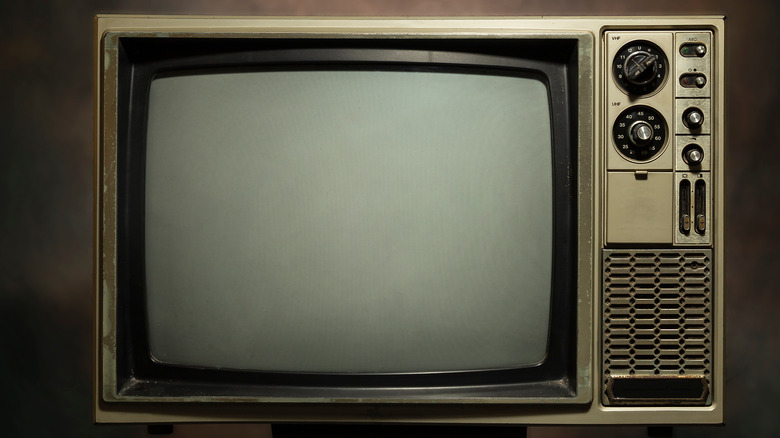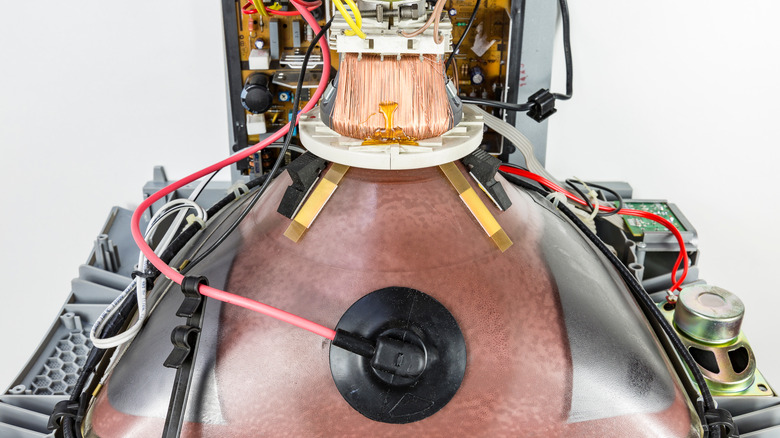How Did TV Get The Nickname Boob Tube?
The television has become a vital focal point in living rooms around the world. Incredibly, Statista reports that there were 1.7 billion TV households around the world in 2019. Though it now shares the burden of entertaining us with various streaming services and other devices, the television has been a tremendous hit since it was first created.
At the same time, though, it has also been controversial for much of its history. Violent and other potentially troublesome programming has met with objection and complaints, while the amount of time that some people spend watching television remains a hot-button issue too.
In 2019, Daisy Fancourt and Andrew Steptoe published the study "Television viewing and cognitive decline in older age: findings from the English Longitudinal Study of Ageing" (via Scientific Reports). The abstract states that "watching television for more than 3.5 hours per day is associated with a dose-response decline in verbal memory over the following six years, independent of confounding variables."
Though it went on to claim that "watching television is not longitudinally associated with changes in semantic fluency," there have always been detractors who feel that television does more harm than it does good. This contributed to the controversial box gaining the nickname "boob tube."
CRT televisions led to the nickname
The term boob tube seems to derive from a prior name for the television: the tube, as Mental Floss reports. This one seems to make perfect sense, as a direct reference to one of the most familiar and essential components of a television set.
As How Stuff Works notes, a cathode ray tube (CRT) consists of a light bulb-like element (the cathode) that expels electrons in a sort of ray to the screen. The screen then emits light when the electrons reach it and react to the phosphor there. A complicated tangle of wires creates magnetism, which allows the electrons to be directed.
Naturally, technology has advanced in leaps and bounds over television's long history. The first broadcast was of a mere line, courtesy of A. Fournier and Georges Rignoux, which took place in Paris, 1909, per History Cooperative. However, the nickname for a cathode ray tube television, simply "the tube," is still in use today. Negative attitudes towards the device seem to have led this fond nickname to be distorted to the boob tube.
Not everyone loves television
The word boob has a number of unflattering definitions, according to Merriam-Webster. It can mean "a stupid awkward person," a "mistake" or "blunder." The television, then, could be considered as a tube for boobs by those who were not enamored by the box.
And, it seems this nickname has been in use for a long time. In 1960 The Citizen-News of Los Angeles wrote that there seemed to be "No cure for boob-tubitis but self-discipline by adults and parental supervision of the time the youngsters devote to television viewing,"(via Mental Floss).
As with much of modern technology, the television can be a tremendous force for good, but it can also be an incredible procrastination machine. The type and sheer volume of entertainment consumed can make all the difference, but there will always be disparaging nicknames from those who dislike the machine. As The British Psychological Society reports, British Prime Minister Clement Attlee presided over the nation when the television really rose to prominence, after World War II. Attlee was no fan of the device, apparently dubbing it "an idiot's lantern." This, too, became a popular name for it.


